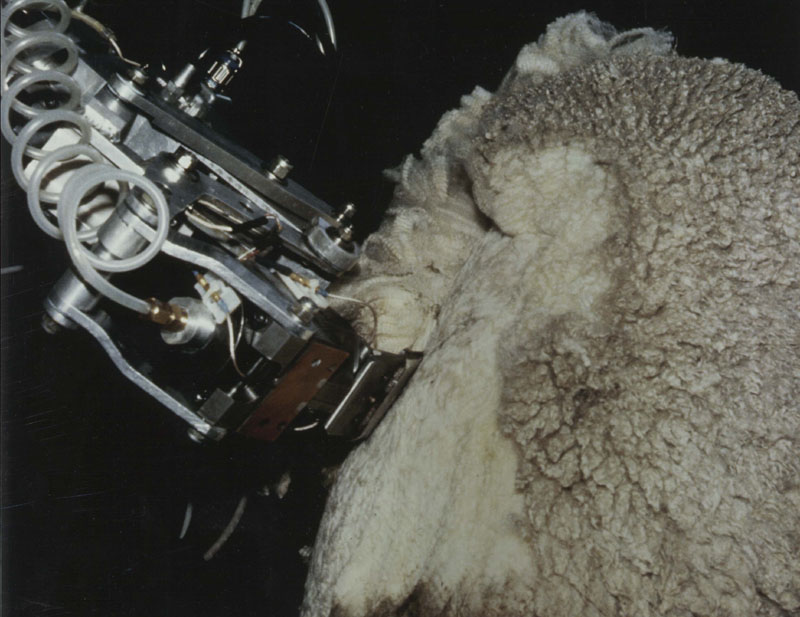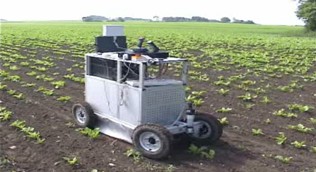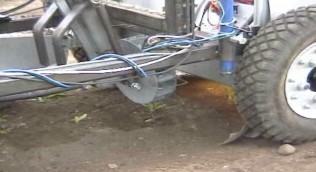 Robotics
in the field of agriculture is a fairly recent phenomenon.
Engineers and agriculturalists, however, have already
designed various successful robots. In July 1979, Australian
engineers designed the Oracle Robot, the first machine to
autonomously shear a sheep with superb quality [12].
Then in 1989, the Oracle's successor, Shear Magic, achieved
the same feat but with the use of more advanced computers
while taking up less space [11]. Robotics
in the field of agriculture is a fairly recent phenomenon.
Engineers and agriculturalists, however, have already
designed various successful robots. In July 1979, Australian
engineers designed the Oracle Robot, the first machine to
autonomously shear a sheep with superb quality [12].
Then in 1989, the Oracle's successor, Shear Magic, achieved
the same feat but with the use of more advanced computers
while taking up less space [11].
Currently, robots are being developed to harvest various
food products, ranging from milk to tomatoes:Purdue
University researchers are working on a machine that
automatically milks cows, clean their udders, and detect
udder abnormalities and problems in the milk [5].
Nottingham is also developing a similar robot, one which
allows cows to decide when they want to be milked. As a
result, both cows and farm workers do not have to follow a
strict routine for milking. Furthermore, the dull work
involved in milking is eliminated giving workers more time
to look after the cows themselves. In turn, milk yield is
increased up to 10% in some cases and dairy animals are kept
disease-free. Evidently, the milking project achieves higher
production while staying environmentally friendly [14].
Peter Ling from Ohio State University also heads a
research group that is developing a tomato harvesting robot
for long term space missions [13].
The robot uses a sensing unit to identify red fruit and then
utilizes a robotic arm with grabbing and twisting abilities.
This project demonstrates that developments in rural robots
have benefits that are not limited to life on Earth.
Another major issue in the field of agriculture is weed
control. Since weeds inhibit the growth of other plants,
farms would normally have to hire people to manually find
and remove these plant nuisances. Because the task is very
tiresome and mundane, very few people are willing to do the
job, which forces companies to lower their production [6].
A robot performing this
task will not only increase crop yield but also
potentially eliminate the use of harmful pesticides and
herbicides. Bjron Astrand, of Halmstad University in
Sweden, has developed Lukas, a robot which removes weeds
for plants grown in rows (i.e. sugar beets, lettuce, and
cauliflower). Though the mechanism is not ready for the
market, Lukas can successfully distinguish between the
weeds and the actual crop [6].
|
 |
 |
The robot takes an
overhead photo of the crop and its surrounding, and then
analyzes the colors and forms to identify weeds.
Finally, the robot physically removes the weed without
harming the crop. Astrand hopes that by the time Lukas
is ready for commercial use, weed control costs will go
down as far as 50% [7].
|
|